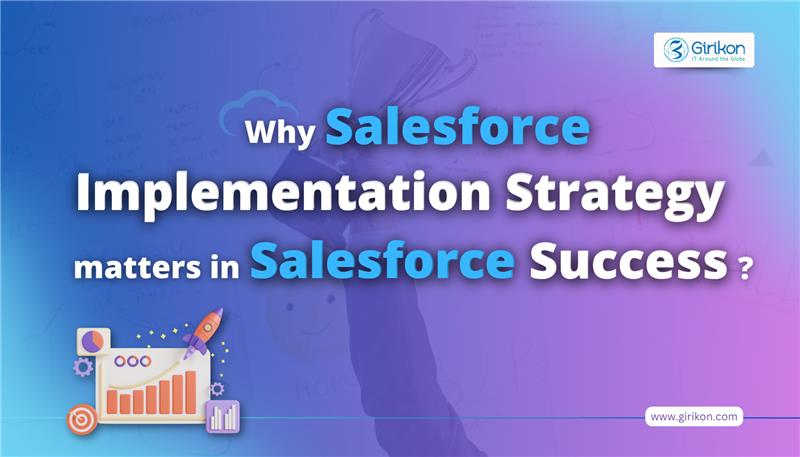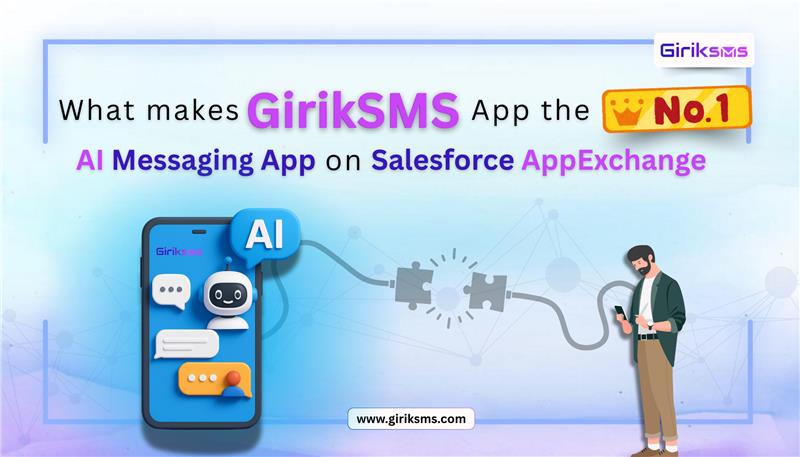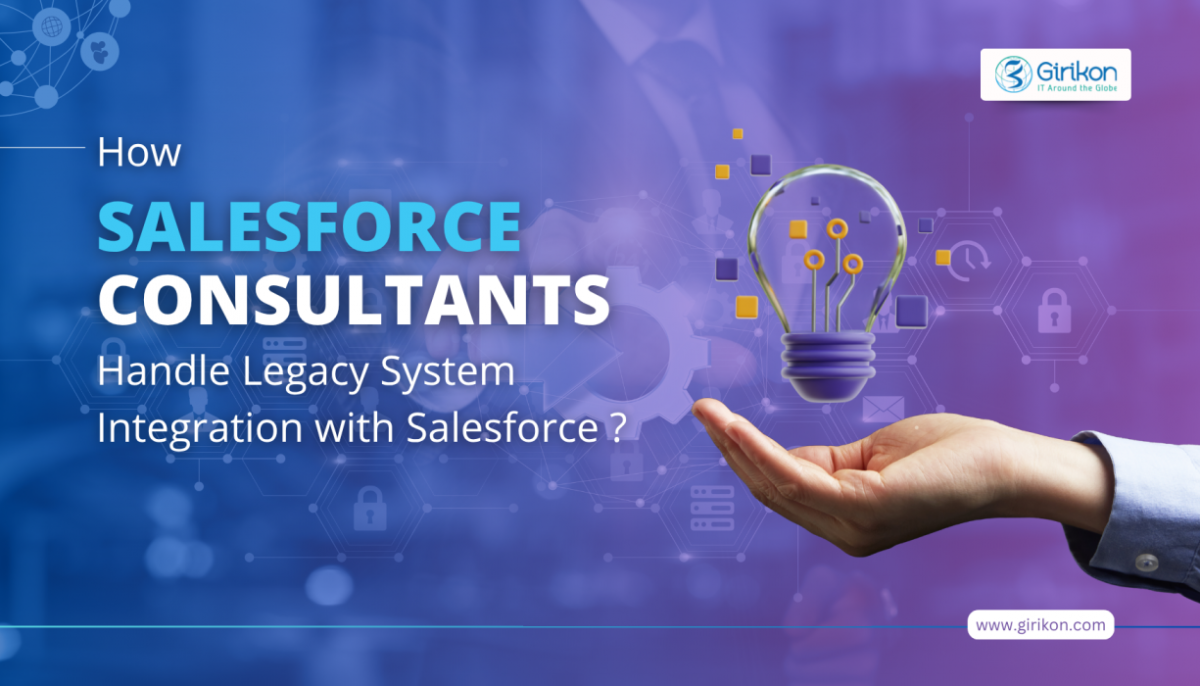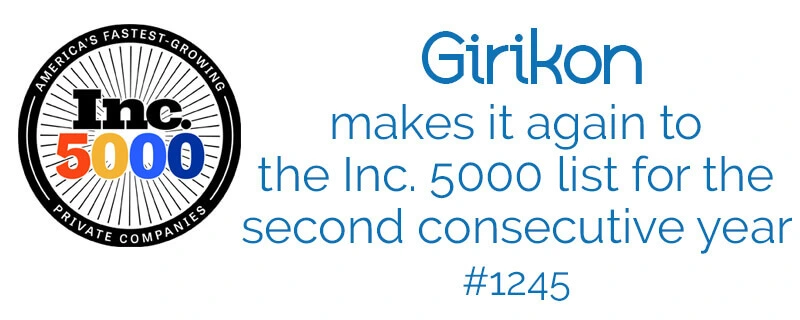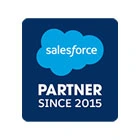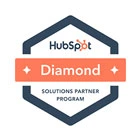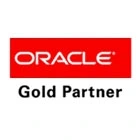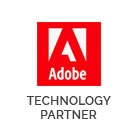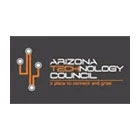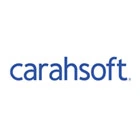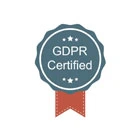When Salesforce acquired Vlocity in 2020, it acquired the capability to sync its core platform with industry-specific solutions & processes. This tailoring of its cloud offering addresses industry specific business needs as well as legal and regulatory needs of companies. Salesforce Industries also offers enhanced data models to serve various industries such as Financial Services, Government, Health, Government, Manufacturing, FMCG, Energy & Utilities, Communications and Media & Entertainment.
More often than not, architects find themselves working on a project with industry-specific requirements. And they need out-of-the-box capabilities from the Salesforce Platform.
What is Salesforce OmniStudio?
Salesforce OmniStudio is powerful suite of 4 core task-based components. They are:
OmniScript
DataRaptor
Integration Procedure
FlexCards
These components empower architects to consolidate applications, quickly bring up new users to productivity, and lower overall costs-to-serve. Salesforce OmniStudio is available as a complete native managed package that can add additional functionality to your existing Salesforce instance.
Data model
Salesforce Industries comes with industry-specific data models, as a layer on top of the Salesforce object model. The data model is completely additive. It is designed to enhance standard objects and fields or allow addition of new custom objects and fields. In other words, there is no duplication of any existing entity.
OmniScript
Architects across the world prefer tailored solutions to simplify maintenance and operations of systems. If you wish to deliver engaging digital experiences which can seamlessly integrate into your website, then OmniScript will help you get the best out of your engagements. With OmniScript you can easily deal with industry-specific cases.
OmniScript enhances interactions by offering tools that are user-friendly can be tailored to deliver additional value to end-users. Also, it offers a code-less environment since it comes with ready-made aspects which can be deployed easily across channels and devices.
Functionalities of OmniScript:
It allows you to easily compose interactive processes for every use case, and allows you to branch easily.
OmniStudio comes with a drag-and-drop OmniScript editor feature. Architects can use this feature to proof-read their work. There are also in-built troubleshooting tools to fix the processes.
Device and channel agnostic. Users can access it from anywhere – whether mobile or web. If you are using a mobile app, you can use the OmniOut function to install Lightning Web Components (LWC) OmniScripts for these systems.
It allows for easy prototyping of user experiences enabling reuse without any challenges by distinguishing between the JSON metadata structure, the data, and the templates.
Allows easy generation of LWCs which can then be used in the Lightning App Builder.
DataRaptor
DataRaptor is a user friendly mapping tool. It allows architects to efficiently extract, store, and access data. DataRaptor allows easy configuration for negotiating any data. With DataRaptor, architects can easily extract, load and transform data conveniently.
There are main 3 components in DataRaptor are:
DataRaptor Extract – It allows you to retrieve data from Salesforce. With DataRaptor Turbo Extract, you can restore data from a single Salesforce source
DataRaptor Load – It allows you to save data
DataRaptor Transform – As the name suggests, it allows you to transform data
DataRaptor acts a connecting bridge between Salesforces and OmniScript/ FlexCard. It loads data from Salesforce and sends it to these sources and sends updated data from these back into Salesforce. It can auto-generate Apex REST web services to work seamlessly with external applications.
Integration Procedure
Integration Procedure is a declarative process that allows you to generate multiple actions with a single hit. It reads data from Salesforce and writes data back to it. With integration procedure, you can also do the same with external systems through REST calls. Integration procedure also allows you to execute Apex code without any user interaction.
These are the features of Integration Procedure:
Executes functions across multiple data sources such as Salesforce, external systems.
Can serve as a data source for OmniScript, FlexCard, REST or Apex.
Trims data that is served to the browser from the server reducing data transfer traffic.
Process huge amounts of data easily.
Allows you to easily load and transform data from third-party sources without any user interaction.
Works with clicks not code, which allows for easy integration and configuration.
Automatically creates REST endpoints to work seamlessly with external systems.
Works seamlessly with Declarative Platform Cache configuration that improves performance and reduces server processing at scale.
FlexCards
FlexCards is an integral part of Salesforce Industries. FlexCards allows you to create industry-specific UI components catering to specific customer needs. FlexCards uses the LWC framework and allows for easy deployment options via Community Builder and App Builder.
FlexCards acts as a data source for DataRaptor, Integration Procedure, REST, Apex etc. When using FlexCards, only data that is relevant to the user is thrown up based on the configuration.
The features of FlexCards are:
Displays consolidated, concise, and relevant information.
Allows for contextual actions to improve collaboration across business operations
Can be tailored to customer preferences across channels and devices
Can access and assess data from Salesforce and external applications
Has an intuitive code-less declarative editor
Auto-creates Lightning Web Components
Advantages of Omnistudio.
Accelerate innovation with declarative tools that empower you to go digital quickly.
Easily deploy industry-specific processes fast to automate interactions
Simplify integrations with drag-and-drop functionality with a modular, granular-service oriented approach
Build tailored flexible, scalable and branded user interfaces with an intuitive code-less configuration
Automate the customer service experience easily with just a few clicks
Make your business agile with scalable digital engagements.
Create code-less, guided user experiences
Allow your users to accomplish complex tasks effortlessly with a flexible, scalable, branded user interface. Easily help them navigate through sales and service processes with quick and personalized responses. Seamlessly integrate with your Salesforce CRM and external systems.
Integrate with external data easily.
Use declarative data mapping and REST interfaces to manage complex data structures fast with a drag-and-drop intuitive interface. Connect with external systems to seamlessly bring in data into the tailored, branded experiences created using OmniScript and FlexCards
Empower agents with contextual information
Streamline and optimize your processes by showing only the data you need, when you need it. Construct guided user interfaces with clicks, not code. Quickly get data into FlexCards from multiple sources.
OmniStudio gives you the tools to accelerate value realization.
Interaction Console
Get easy access to dashboard components that give you a 360 degree view of the entire customer journey and offer insights to help resolve issues faster.
IDX Workbench
Easily migrate changes and manage cross organizational dependencies and simplify DevOps. Visualize and compare changes across versions in a desktop app. Easily switch components across source control, sandboxes, and production.
Omni Analytics
Visualize data to understand process performance and identify trends. Take actions to improve core metrics and KPIs.
Project Explorer
Structure industry processes by organizing metadata into collections that can be accessed from anywhere in the org. Search and navigate easily across items.
At Girikon, a Salesforce Implementation Partner, we recognize the promise that Salesforce Industries and OmniStudio bring for architects. And with Salesforce’s commitment to continued enhancement, it promises enduring productivity and innovation for architects. Contact us today to learn more.
In today’s pandemic context, businesses around the world have embraced digital transformation to re-imagine their internal processes. In partnership with global Salesforce Consultants, the Customer 360 platform has helped organizations witness exponential growth in lead conversion and customer satisfaction scores. And with digital transformation, there has been growing need to make the platform available to field services. And that led to the birth of Salesforce Field Service Lightning.
Salesforce Field Service is a solution that extends the power and flexibility of the Salesforce platform to field service operations. Multiple teams across geographies can be easily connected to everyday field service tasks that require site visits in real time.
What Is Salesforce Field Service Lightning?
Salesforce Field Service Lightning is Salesforce’s new offering as part of its Customer-360 platform to augment the customer experience through field services. One of the hallmarks of Salesforce CRM is the 360-degree insight on customers. With Field Service Lightning, customer information percolates downstream to the field service agents. Along with that, Salesforce also provides a Field Service learning map, a handy resource to guide you on your path to Field Service success.
Let’s dive deeper into the key functions of Salesforce Field Service Lightning to understand why it’s useful for businesses.
Task Assignment
This is perhaps the most attractive feature of Salesforce Field Service Lightning. With this function, you can quickly create tasks for your field service agents and track the tasks assigned in real time. Standard activities such as appointments, maintenance tasks and other field activities can be easily managed by the field agents and technicians.
And because of the fully integrated capability of the Salesforce platform, Field Service Lightning comes integrated with contacts, accounts, cases, and other items. You can get access to knowledge articles and real time tracking of SLA compliance with relevant milestone tracking or visit resolution.
Service and Resource Allocation
Field Service also allows you to automatically customise and assign tasks as per company guidelines. And not just that, it also allows you to book appointments easily based on customer data and tailor the relevant tool for a particular task based on capacity, location, and business rules. Customers can also auto-book an appointment conveniently.
Real Time Inventory
Using the Field Service mobile app, you can view the assets installed at client locations using the barcode scan function. You can scan team barcodes and update the inventory available with a particular truck. This allows the field technician to easily manage the tools inventory and materials that is being transported to the customer.
The required field service tasks can be associated with both the inventory required for the task as well as the skills required to complete them. You can configure multiple storage locations for materials and tools which could be fixed locations such as warehouses as well as mobile inventory such as trucks or backpacks.
Dispatcher Console
You can easily assign tasks and link it to the right agent based on multiple criteria such as work location, required knowledge to accomplish the task, agent availability, and much more.
The dispatcher can get a complete view of all scheduled appointments, their stratus updates, with alerts for issues that require urgent intervention. The field service map shows you the status of the service task in real time, showing the current location of the both the technician as well as the client. With this feature, tracking and management of field technicians becomes more efficient.
Field Service App
Using the Field Service Mobile app, the field technicians can view the list of pending tasks for the day in real time. Tasks can be viewed in 2 ways: a sequential list for the day ahead or a map that shows the route to follow. Technicians can also fill in the necessary information required to complete the task. The app also provides relevant guidance to the technician to ensure that the necessary steps are followed to confirm the appointment, making their job easier.
Field Service Lightning comes integrated with Chatter. This allows field technicians to share updates with other technicians or the dispatcher in real time. Customers can sign on the app itself and technicians can create service reports by having a digital document about the job.
The app also works seamlessly in offline mode, which may be necessary in remote areas. In offline mode, all Field Service functions are available in the app. This allows technicians to complete tasks in areas where there is limited or no mobile service. Technicians no longer have to be limited by circumstances and can deliver great customer service everywhere.
Data Analysis
Salesforce has set a gold standard when it comes to data analysis and Field Service Lightning is no different. In Field Service, you can easily perform data analysis on the go with just a few taps. You can create comprehensive custom views of technicians, supervisors, and third party contractors. Salesforce Field Service Lightning allows you to easily integrate all data from multiple systems making service and its supervision possible.
4 Advantages of Salesforce Field Service Lightning
Salesforce Field Service Lightning integrates seamlessly with tools of the Salesforce ecosystem such as Service Cloud to deliver greater efficiency and productivity.
Shift Management
Organizing field service teams in shifts and complex trip management is a thing of the past. Salesforce Field Service Lightning is built on an object model that allows for improved and easy management of these processes. Supervisors and managers can easily manage resources and shifts and relieve administrators of unnecessary heavy lifting of mundane tasks.
Dependencies
Linking tasks can now be done easily with Field Service Lightning. More often than not, tasks have dependences and its critical to correlate them to maintain service levels. This is particularly helpful in scenarios where a particular work order has multiple tasks that must be completed.
Service Groups
This allows field service agents to work as a collaborative team for easier planning and execution of field service tasks. This brings in fluidity to the entire service operations.
More often than not, field service teams work under the assumption that everyone has similar skills, which limits a work order to be able to allocate resources using a combination of skills. For instance, if you need a carpenter and a plumber, they should be assigned to different service appointments with the same start dependencies amongst them. This feature comes in handy for certain scenarios such as professional services or complex engineering.
Salesforce is committed to continue its technology innovation to bring value to its customers, their employees and partners across industries. Field Service offers a significant improvement for your business, covering all your task and logistic management needs and ensures that your field service agents can spend most of their time on what they do best and not in mundane, repetitive tasks.
At Girikon, a Gold Salesforce Partner, we offer consulting, implementation, and training across the entire spectrum of Salesforce products. To know more about how Salesforce Field Service Lightning can significantly improve the efficiency of your field service operations, contact us today.
Global Digital Skills Index from Salesforce research conducted in 2022 indicates a growing digital skills crisis. The in-depth research about digital skills is based on a survey with 23,000+ respondents (existing and prospective workers) across 19 countries. It includes areas such as their impact on the future of work, their job readiness concerns, and the importance of continuous up-skilling.
CRM is reshaping customer service today and Salesforce Consultants are helping customers around the world remodel their customer service operations with the world’s leading Customer 360 platform. With rising customer demands and fickle brand loyalty, it is time to stop escalating customer issues and resolve them using a collaborative approach.
With the help of the right Salesforce Partner, you can build an intelligent service swarming model to make your service teams become more efficient by bringing expertise to customers faster.
Imagine a situation when a key customer reaches out to you with a complex issue. it’s the moment of truth. Does your agent escalate the problem or collaborate on it? If the process you follow is always to escalate then visualize this: a team of experts comes together quickly to help your service agent to resolve the problem. This is service swarming.
Service swarming eliminates guesswork from customer service. It allows service agents to share resources and expertise to resolve complicated customer problems faster.
Let’s dive deeper into what service swarming is and how it can benefit your agents and therefore your customers.
What is service swarming?
Service swarming, often referred to as Intelligent Swarming, is a collaborative approach to customer service. A team of experts from across your organization collaborate with your service agents to resolve complex cases or larger incidents faster. These experts can be from any department such as sales, commerce, operations, legal, finance, or any other department, depending on the issue.
This enables teams to leverage their expertise and collaborate on complex issues as and when they come to light. These experts share their knowledge and resources with service agents during the service swarming process. Once they arrive at a solution, the team documents the process and creates a knowledge article so other agents can reference it in the future when similar issues emerge.
In today’s digitally connected world, businesses must be prepared to respond in real quick time to large incidents such as security attacks and service outages. The moment an incident like this occurs, the clock starts ticking. There is a barrage of customer calls. Service agents scramble to juggle between diagnosing the problem and dealing with the overwhelming number of calls. An SLA breach looms large which would lead to a PR nightmare. It’s critical for customer-facing teams to be able to quickly and seamlessly collaborate across departments to identify and resolve the problem.
Swarming is particularly useful when there is a larger and complex issue facing a single customer like a security breach. Swarming can also be scaled to address major incidents that affect multiple customers, like a Denial of Service (DoS). In either case, a collaborative approach that brings together multiple teams, departments, and in certain cases even external partners, is vital to finding a resolution. For instance, if a customer contacts a brand about goods showing up as delivered but not received, the agent can bring in the logistics partner to help.
The benefits of service swarming in customer support
In a traditional customer service model, agents resolve most cases on their own. They search the knowledge base and seek the help of colleagues for issue resolution. But as more time passes, the customer starts to lose patience. The agent escalates the case to an agent at the next hierarchal level or connects with a supervisor, or in some cases transfers the case to an entirely department, which frustrates the customer even more.
A swarming service model turns this entire process on its head. Agents collaborate with a team of experts and are able to arrive at a resolution faster. Not only that, in the process they also become more knowledgeable and efficient, which leads to cost savings for your business. Service Swarming leads to:
Personalized customer engagement: According to Salesforce, 82% of customers expect resolution to their problem by interacting with just one person. Service swarming significantly reduces the complexity of larger problems because now the agent is their single point of contact for the customer throughout the case. This fosters a one-to-one relationship that builds trust and loyalty.
Accelerated skills development: In any organization, knowledge spreads across many layers and sources. When a complex case is passed off by agent because of lack of knowledge, they lose out on an opportunity to gain valuable experience. However, when they collaborate with experts in a swarm, they learn something with every case resolution. The learning that comes over time with a swarm approach would otherwise take years to build.
Scaled automation: According to Salesforce, 63% of agents say it’s extremely challenging to balance promptness and high-quality service. But isn’t that exactly what customers expect from you? With automation, agents can save time and lower operational costs by eliminating repetitive tasks, thereby boosting team efficiency at scale. Service teams more time to focus key activities like building strong, trusted customer relationships.
Teams working together: Service Cloud has a unique feature called Expert Finder. The name says it all. Customer service agents no longer have to work in isolation. Service agents can quickly identify and access a support network of experts and resolve the issue. In fact, agents can be incentivized based on their participation and performance. When a case is resolved, supervisors can recognize those involved and award points which encourages greater participation.
Evolved success metrics: Performance metrics such as average resolution time and first-contact resolutions are always valuable. In service swarming scenarios however, those metrics don’t always apply. Other key metrics such as lower customer wait times, escalation rates, and case handover take priority. Using these indicators, customer service managers can track agent productivity, expert utilization, customer satisfaction, and retention.
Swarming is a new approach to customer service and gives you a fresh perspective of your service teams. There is a paradigm shift in the way your agents and experts work together to resolve customer issues. Now both have a customer centric approach. Collaboration becomes central to customer service; no one is working in isolation.
A swarming support model requires a unified platform
At Salesforce, the customer is at the centre of everything they do. With a unified platform, you can bring together automation and AI to drive productivity and efficiency. With automation and AI, building on a collaborative approach to problem solving, teams can do more with less, allowing you to focus on the most important thing – making customer delight the goal of every experience. A delightful experience leads to greater trust and lasting value.
If you want to implement service swarming in your business to scale your service operations and make it more efficient, you need to invest in the right technology. Empower your service reps a unified platform that is built for team success, allows for a high degree of automation, delivers insights with AI and helps you to deliver personalized customer experiences every time. With a unified platform, your teams can work together from anywhere and deliver the value that your brand stands for.
Salesforce Service Cloud is the world’s leading customer service platform and can help your teams resolve issues and incidents seamlessly. With Slack, you can bring in cross functional swarm experts and easily navigate seamlessly across text, voice and video to deliver case resolution in quick time, thereby building on customer trust and loyalty. And while all this is happening, your service teams are being empowered with fresh knowledge that makes them future ready.
Girikon is a Certified Salesforce Development Partner delivering value to customers across the globe. To know more about how we can help you deliver best in class SLAs in customer service with service swarming, contact us today.
Salesforce Lightning, put simply, is next generation CRM. With Salesforce Lightning, developers can build stunning apps with unprecedented ROI.
Lightning is super-fast, extremely powerful, very intuitive and has an abundance of features. It is a lightweight, component-based framework purpose built for accelerated app development. With Lightning, admins and developers can build and deploy apps faster than ever before, and makes business users more productive in every moment.
Let’s look at some of the features of Salesforce Lightning that make it so powerful:
Kanban View
The Kanban view feature is available exclusively in the Salesforce Lightning experience. As was expected, it has become a natural go-to for most Salesforce users. Regular everyday users of Salesforce regard Kanban as their online workspace, and not just another view within Salesforce where data is presented based on selection of filters.
For instance, when sales reps open the opportunity list view in Salesforce, they can view active sales opportunities organised by their respective stages in the timeline on a Kanban board. This view displays the opportunities within the selected filter. With this view, sales reps can get a clear view of the stage they are at in the sales process for each and every opportunity.
Email Integration for Lightning
Lightning does away with the need for shifting back and forth between your email app and Salesforce. Email can now be seamlessly and easily integrated with Salesforce in a single console, thanks to Lightning.
Users can easily integrate Outlook, Gmail or other email services and bring together all connected Salesforce data such as call logs and tasks into the email UI. Lightning significantly improves productivity by allowing users to work directly from their email, with all the associated data they need from Salesforce.
Salesforce Experience Cloud Communities
Salesforce communities has been renamed Salesforce Experience Cloud. It includes tools used by businesses to connect with their customers and partners through shared portals on the Salesforce platform. With Salesforce Lightning, developers can easily create and manage branded community portals.
This feature of Salesforce Lightning comes with an inbuilt powerful drag-and-drop interface. With this feature, users can easily add new functionality and content to the platform. With Salesforce Experience Cloud, it is easier than ever before to create content and feature rich community portals with the help of a library of pre-built templates.
Salesforce Lightning Dialer
Support reps and communication teams need to manage a high call volume to interact with prospects and customers on a regular basis. To be able to do this, their managers need to have information about the calls. In Salesforce Classic, this information is retrieved in real time. Having said that, managing calls would be far more efficient, if the phone functionality existed within Salesforce.
The Lightning Dialer comes in-built in Salesforce Lightning, which reduces clicks and makes the whole process of calling and recording more efficient. This is made possible by integrating the Salesforce UI with calling systems. This allows reps to streamline calls and it automatically records the key performance indicators.
Salesforce Lightning Paths
When reps are working on complex processes in Salesforce, they often need guidance. Salesforce Lightning Paths is a feature specially built for Salesforce users to offer them that guidance to work with complex tasks or opportunities.
With the help of this feature, Salesforce users are able to easily navigate through complex processes with the help of recommended pre-determined steps.
An Advanced User Interface
The Salesforce Lightning user interface is extremely robust and offers remarkably flexibility when compared to Salesforce Classic. The user interface offers easy interoperable code development across devices. It facilitates user productivity and drives work efficiency with much lesser code. Intelligent home pages built from template libraries allow users to track performance to goal, and get real time updates on key accounts.
Reports & Dashboards
The Salesforce Lightning Experience comes with a complete overhaul of reports and dashboards. They are now much more interactive, easier to navigate through and customise. Sales reps can get more insightful information from interactive charts without having to dive deep into reports. With the Lightning dashboard editor, dashboards can be fully customised with prebuilt components. Reports quality can be augmented and made more insightful without the need of the report builder. With the new Lightning UI, it’s much easier to find reports & dashboards via fully customisable home pages.
Activity Timeline
In Salesforce Classic, users have the option to view Open Activities which allows them to create tasks & record event. And with Activity History, users can log calls or send emails. In Lightning however, Salesforce has added a functionality that allows users to create the tasks and along with it, it gives you an activity timeline which shows the activities you have already created. With the activity timeline functionality users can view open tasks, scheduled meetings, and more in the activity timeline.
Salesforce Einstein
Salesforce users are familiar with Salesforce Einstein. This is one of the standout features of Lightning. Salesforce Einstein, an AI based digital data scientist, empowers businesses with the tools and resources to become more predictive about future trends and customer behaviour. Einstein significantly boosts the productivity of sales, service, marketing teams.
Live Feeds
This is another unique feature in the Salesforce Lightning Experience. When in a group in the Lightning Experience, the Chatter feed is on. Live feeds delivers posts and comments from other users in the group as and when they are posted, keeping you updated in real time about discussions within the group.
Lightning App Builder
The Lightning App Builder is a drag and drop tool using which you can easily create custom pages within the Lightning experience, giving you all that you need all in one place. With Lightning app builder, you can configure and customize lightning components in create business-specific apps.
Lightning Snap-Ins
Lightning snap-ins is a key component for Service Cloud users. Snap-ins allows businesses to quickly manage client support directly within their Lightning pages. With Lightning snap-ins service reps can reach out to customers in real time on any device, and deliver personalized service across every touchpoint in the customer journey.
Steelbrick Feature
Steelbrick is another unique feature built entirely on the Lightning infrastructure. With its CPQ (Configure, Price, Quote) functionality, sales reps can easily create offers and contracts for brands. Also, they can easily get approvals and signatures without ever leaving Salesforce.
AppExchange
There are a plethora of Lightning-ready third-party apps on the AppExchange. And this number is growing by the day. All these apps are vetted by Salesforce and are pre-integrated to work seamlessly with the Salesforce platform. With the help of these Lightning-ready apps, you can deliver consistent, personalised experiences to your customers, boost internal productivity and drive RoI. All you need to do is look for ‘Lightning Ready’ apps on AppExchange.
The intelligent, intuitive, and future-ready design of Lightning is enabling businesses to improve efficiency and productivity significantly. The stunning UI, intelligent views, integrated reports and dashboards, pick-and-drop functionality, limitless customizability, backed by the power of AI, makes Lightning a compelling choice. As a Salesforce Gold Certified Salesforce Partner, Girikon has helped multiple businesses leverage the Lightning experience to achieve business success. Contact one of our experts today to know more about how we can help you get the most out of Lightning.
A Guide to Higher Education Marketing
-
January 5, 2023
-
Indranil Chakraborty
A summary of Unified Higher Education Marketing
Higher Education marketing and communications takes place in a landscape where approximately 75% of campus staff associated with marketing and communications do not report centrally, but typically through a reporting head such as a college dean or department leader. Consequently, this can lead to cascading operational inefficiencies, brand misperception, and an incoherent experience for students, faculty, staff, and supporters.
While colleges and universities can adopt several different marketing and communications strategies for various campus functions, one of the critical ones is to unify and centralize specific aspects of marketing and communications. Unfortunately, this approach comes with its inherent challenges and necessitates a high degree of collaboration.
Some of those challenges include:
Resistance to change: The common perception that the current state is adequate as is, can stall a more unified way of working.
Siloed nature of departments: A legacy culture of decentralization makes collaboration and unification more difficult.
Shadow technology: Marketing technology tools and solutions implemented without guidance from marketing or IT.
Discounting central marketing and communications: When the central department isn’t viewed as a key partner in marketing and communications, departments depend on outside agencies.
Moving too quickly: Trying to get too many departments aligned at once can complicate things rather than simplifying.
The Benefits of Unified Marketing and Communications
There are several benefits associated with a unified approach to higher education marketing and communications that go beyond just a connected experience for students, faculty and staff.
These include some key operational efficiencies that save time, augment knowledge and absorption, and distributed costs among departments. As budgets change, marketing teams should be able to show the evident benefits of alignment.
Shared Cost: Most colleges and universities have marketing and communications teams working with different technologies. This leads to cost redundancies that aren’t always apparent.
Shared Knowledge: When using many different technologies, there are limitations in combining and understanding knowledge to drive innovation.
Shared Data: Data is critical to understanding how institutions are engaging with stakeholders in a manner that makes sense for them.
Shared Messaging: This constitutes messaging with an appropriate level of personalization.
5 Strategies for Higher Education Marketing and Communications
The following five strategies should be embraced to achieve operational efficiencies across campus.
1. Consistent Messaging, Voice, and Tone
A central messaging platform is vital. While centralised messaging, voice, and tone is important, it needs to be relevant for various departments across campus, for it to be widely adopted. For messages to resonate amongst the audience, it is essential to understand the overlap of audiences.
Media: Media rules of engagement should be established clearly, to ensure consistent messaging across print, social media, web, and email.
Brand: Most colleges and universities don’t have the bandwidth to support multiple brands. It is important to adopt a “branded house” strategy and foster sharing of resources.
2. Segment Constituents
Since the pandemic hit us, audience segmentation has been a key topic of discussion for higher education marketers and communicators. However, limited access to all data, especially constituent metadata such as descriptive information, makes audience segmentation and targeted personalization of messaging a challenge. Consequently, engagement is at times carried out using batch wise email blasts.
The key points to consider are where the data is, its accessibility, can the preferred marketing and communications platform use it, and can it be segmented prior to launching outbound campaigns.
Metadata for Constituents:
Full name
Address
Major
Last event attended
When they last donated
Expected graduation date
Research they engage with
Forms submitted across the college/university
3. Support Services
It is essential for marketers and communicators to be viewed as a strategic partner and not an someone who are meant to take orders for the rest of campus. Unfortunately, establishing this alignment doesn’t happen organically. It needs complete and mature support services that bring staff together from discrete departments.
To begin with, best practises should be documented and made accessible online easily. Also, it must include ongoing training so that departments and staff can fully absorb the brand message, voice, tone. And understand how technology can help them to deliver it to the right audience.
Higher Education Institutions that have successfully achieved alignment conduct monthly or quarterly meetings amongst all their campus partners where they share experiences and deliberate on ways to further engagement.
Suggested Support Services Include:
Brand Assets Library: Includes fonts and typesetting, color palette, graphic elements, email guidelines and templates, social media guidelines, and web standards.
Training: Includes onboarding and regular training. Training methodology should balance courses for beginners and advanced ones, to keep all partners engaged.
Campus Community: Regular meeting for the central department to share strategy with partners and encourage partners to share their perspectives.
Governance Model: Establish the rules of engagement that partners need to follow. In an ideal scenario, the central department for marketing and communications is the owner.
Center of Excellence (COE): This is a must when you are managing a central technology platform. It allows campus partners to ask questions and receive guidance and support.
Innovation Workshops: Campus partners can learn about new features and functionality about the technology being used and understand how they will be used going forward.
Best Practices Sharing: Regular feedback sessions to establish what’s working and what’s not. This opens up opportunities for partners to learn from each other’s mistakes and/or successes.
4. Have a Full Stack MarTech
A unified, aligned higher education marketing and communications team is one that drives engagement with the right audience with a robust central MarTech strategy.
Higher Educational institutions deploy a huge amount of marketing and communications messaging across multiple digital channels, such as email, SMS, web, ads and social media. While it is important to have a rich set of features and functionality for creating and launching campaigns across channels, the ability to have actionable data and deliver personalization is what is most important.
This is where a best-in-class CRM platform for higher education becomes critical to aggregate constituent information, and use that information to segment audiences and deliver a personalized and relevant engagement.
5. Plan Big, Start Small
Once you’ve identified your brand messaging platform, and established campus-wide technology, along with complete support systems, the next step is to get campus buy-in to set your plans in motion.
Most colleges and universities however, operate on a decentralized model. Unless there’s a clear directive from the top leadership, bringing other departments along would require a consensus. If working with your central team is challenging, other departments may not see the value in aligning with them.
Big changes don’t happen overnight, so start with small steps, one at a time. Identify and start with partners that are open to innovation. Do a test pilot, and fine-tune a unified approach. The learnings acquired from early partnerships are key since they form the blueprint that other constituents can follow.
Steps To Get Started
Identify a large, strategic partner who you think is key to success. Get them on board in the planning phase itself.
Onboard one or two smaller departments with whom you have a good rapport. These departments should be aware of the value of alignment and are willing to innovate and learn with you.
Keep the rest of the campus apprised of these partnerships. Some may be skeptical, but once they see value in what you have undertaken, they will get on board.
Unified higher education marketing and communications can be quite a challenge. It requires a significant amount of effort to ensure alignment across many different departments, but it’s totally worth the effort. Higher Education institutions that follow these marketing and communications strategies can attain higher operational efficiency, a better understanding of the campus-wide marketing technology landscape, and higher engagement from their constituents.
Behind every great strategy is a partner that you can trust. You need a certified expert. Learn more about how you can partner with Girikon, a Certified Salesforce Partner, to support your institution’s marketing and communications teams.
What started out as a Software as a Service (SaaS) has today evolved into a full service stack of software with limitless possibilities. Today, Salesforce offers tailor made platforms for specific verticals, such as Government Cloud, Health Cloud, Commerce Cloud, Financial Services Cloud and Education Cloud.
A Salesforce Partner Company is a business that specialises in Salesforce implementations for customers. They provide consulting services to customers using best-practice guidelines, enabling them to adopt and tailor the Salesforce platform to align with their specific business goals. Within the Salesforce Partner eco-system, partners can be classified at Silver, Gold, Platinum and Global Strategic by Salesforce. While this classification is based on a complex scoring system based on several criteria, one of those criteria has to do with the number of certified consultants on its staff.
Customers are demanding. They expect more from you. They want to rest assured that you have assigned your best resources for transforming their business. They want to know that they made the right choice when they selected you as their Salesforce Implementation Partner. They want to know that you understand not only the intricacies and capabilities of the Salesforce platform, but also understand how they do business. This is where the roles of certified consultants becomes very important.
Here are some benefits Salesforce Partner Companies derive out of Certified Consultants.
Stand Out
A certification is a statement to the world that your consultants have some serious Salesforce skills. Certifications inspire confidence in customers and prospects that you are good at what you do. And you know your subject very well. If a customer must choose between 2 companies, and only one of them has certified consultants, well, picking the one with certifications is a no brainer.
Stay on the edge of knowledge
Having certified consultants shows that you are not happy sitting in a comfort zone. Three times a year, Salesforce releases a new batch of cutting-edge features. If your consultants are certified, you are making a statement of commitment to a constant cycle of learning and growth. It shows that you as an organization want to offer the best possible resources to your customers. Certified Consultants automatically become a part of an intellectual community and leverage A Dynamically Updated, Current Knowledge Base
Smarter Efficiency
Salesforce certified consultants can be assigned on projects faster, solve problems on the fly, and quickly deploy smart, effective business solutions. As a Salesforce partner, you can inspire confidence in your customers that you can overcome challenges and solve their problems. Lead an effective and productive workforce that deliver results for your customers.
Create Opportunities
Certified Consultants empower Salesforce Partners to knock on new doors for opportunities with confidence. Create new growth opportunities beyond boundaries with a team of certified consultants.
Commercial benefits
Needless to say, Salesforce Certified Consultants get paid more. Customers are willing to shell out that extra dollar, if they know that your best, most experienced and certified consultants are working on their project
Conclusion
Companies across the world are adopting Salesforce to transform the way to do business. The demand for the world’s No1 CRM platform is growing exponentially. Consequently, so is the need for experts to drive that transformation. Partner companies want to hire consultants who can prove to be an asset for them, and certification certainly helps. Businesses know that with cloud certified experts, they deliver transformational Customer360 experiences.
With Girikon, you can get access to a pool of Certified Salesforce Consultants with multi-vertical experience across various Cloud offerings within the Salesforce Cloud bucket. Contact us today to know more about how we can help you.

 +1-480-382-1320
+1-480-382-1320 +44-7428758945
+44-7428758945 +61-1300-332-888
+61-1300-332-888 +91 9811400594
+91 9811400594